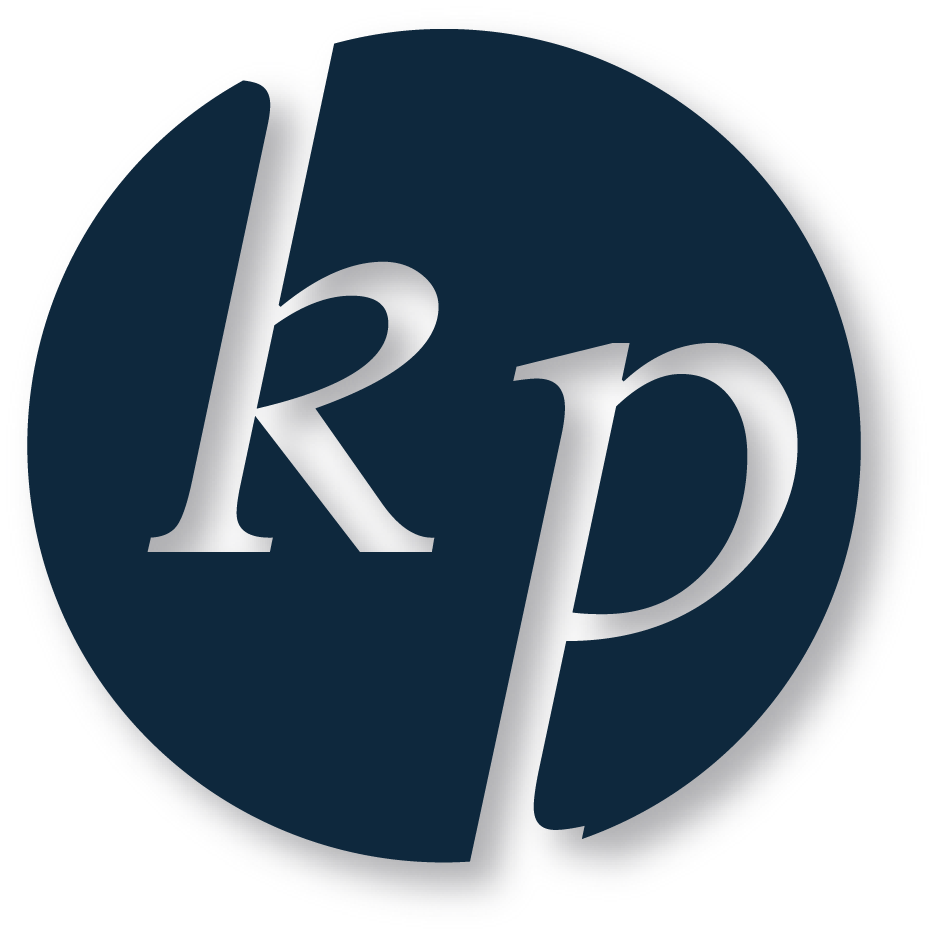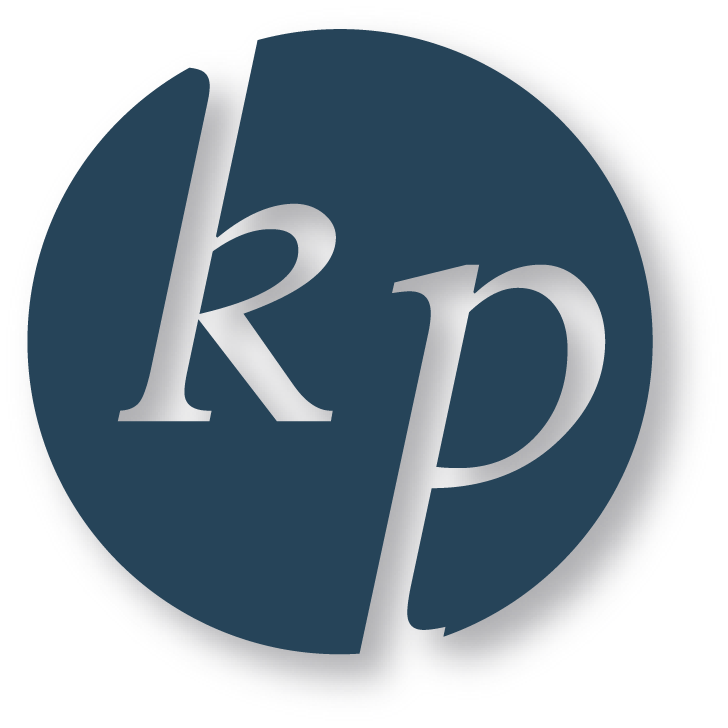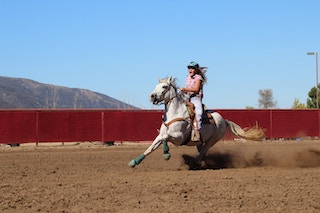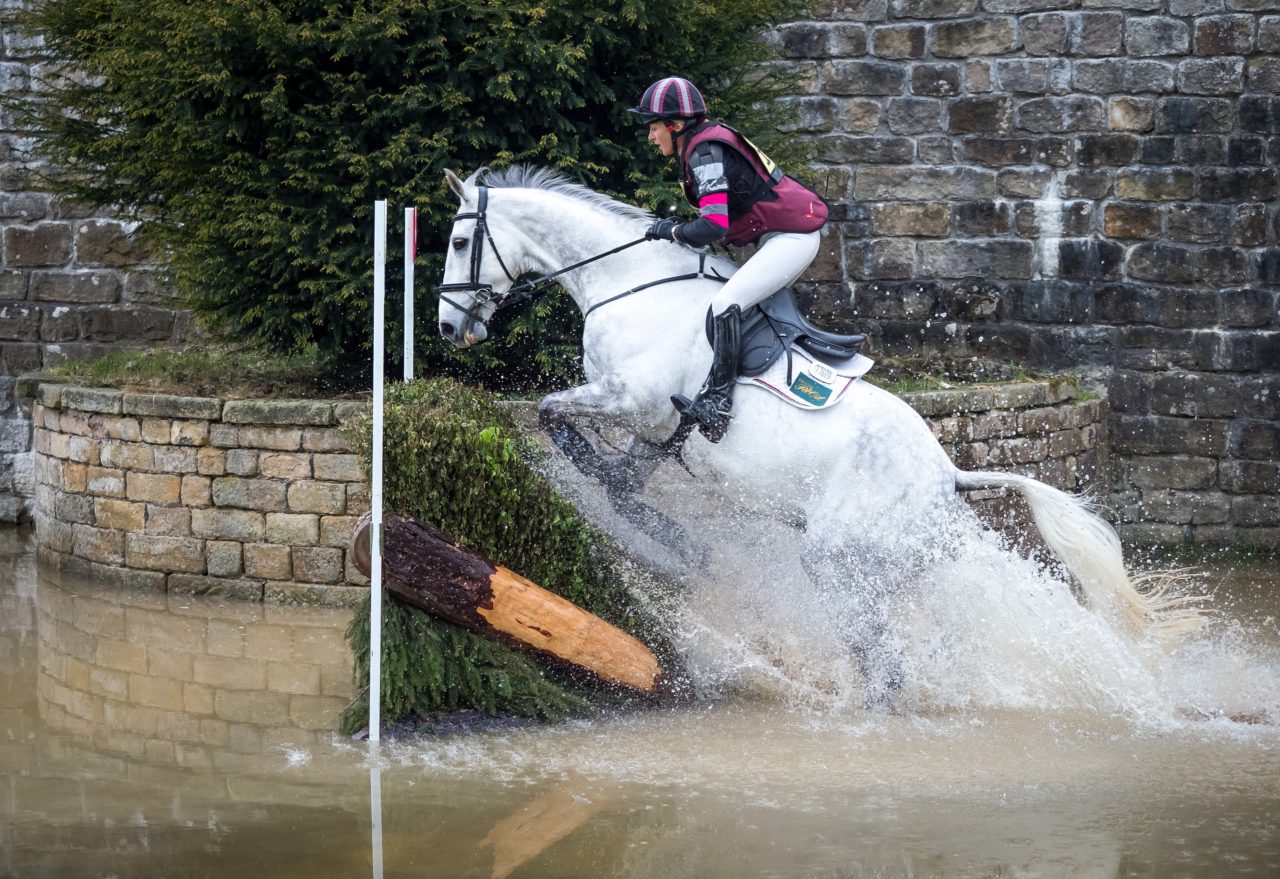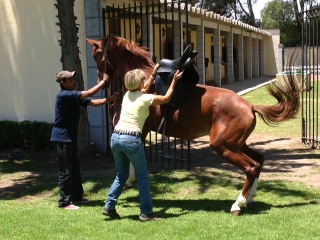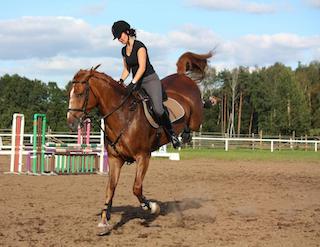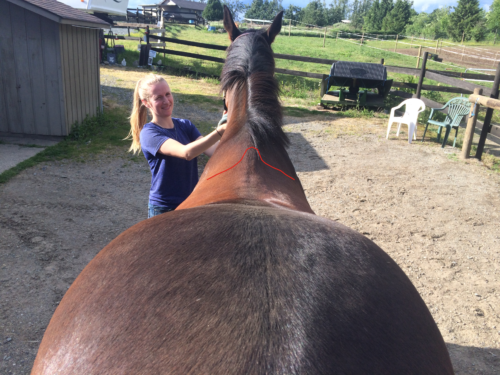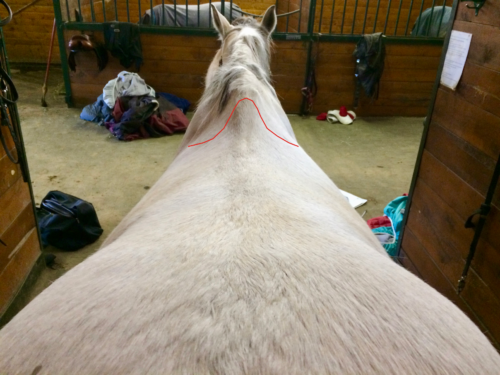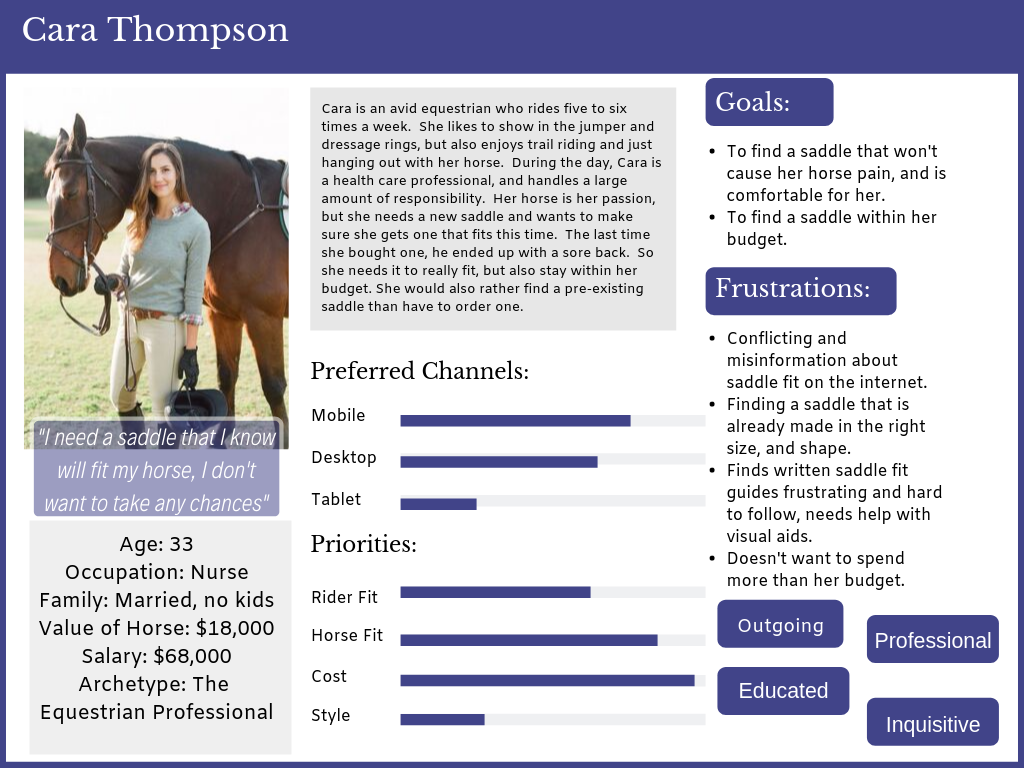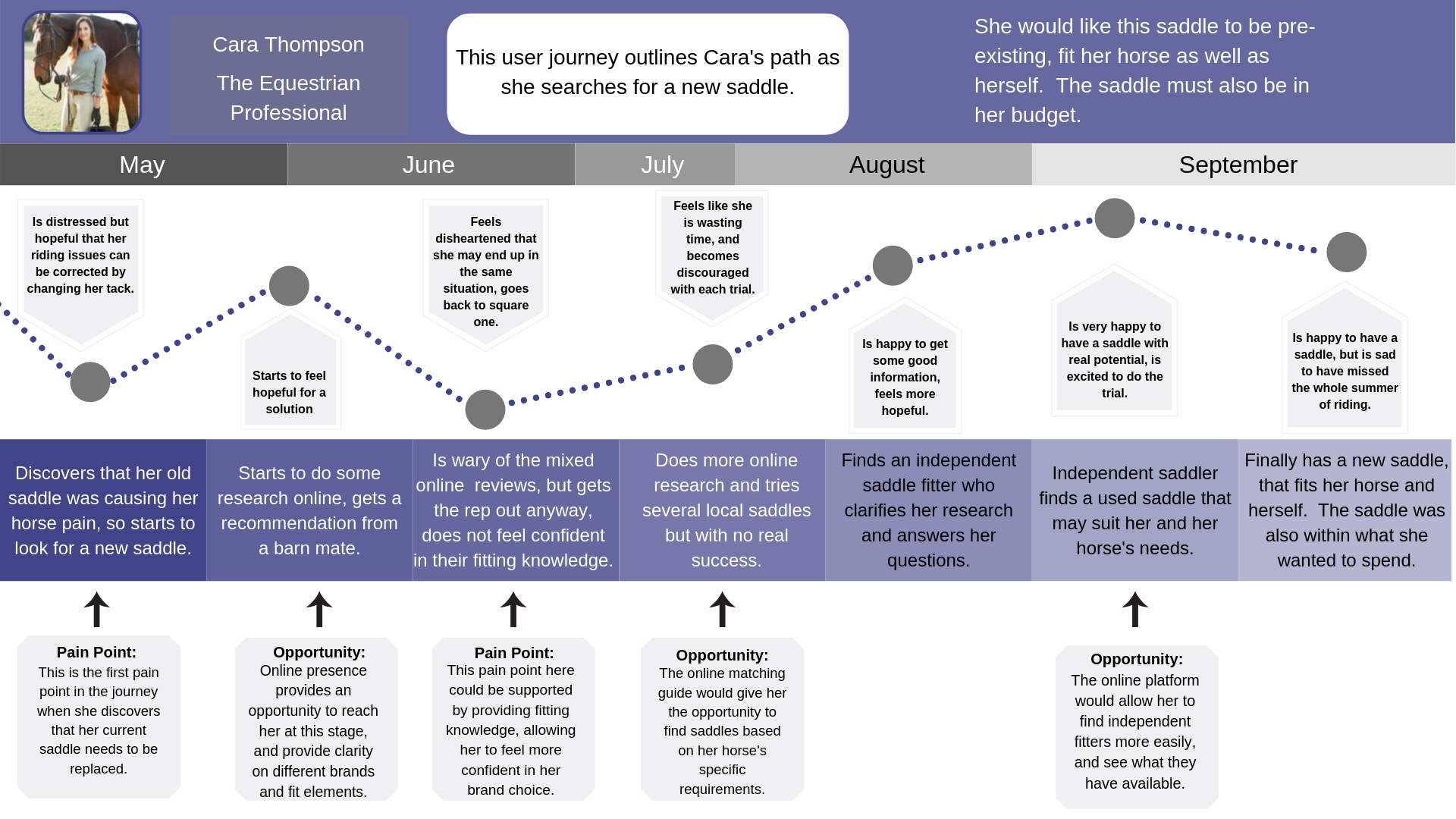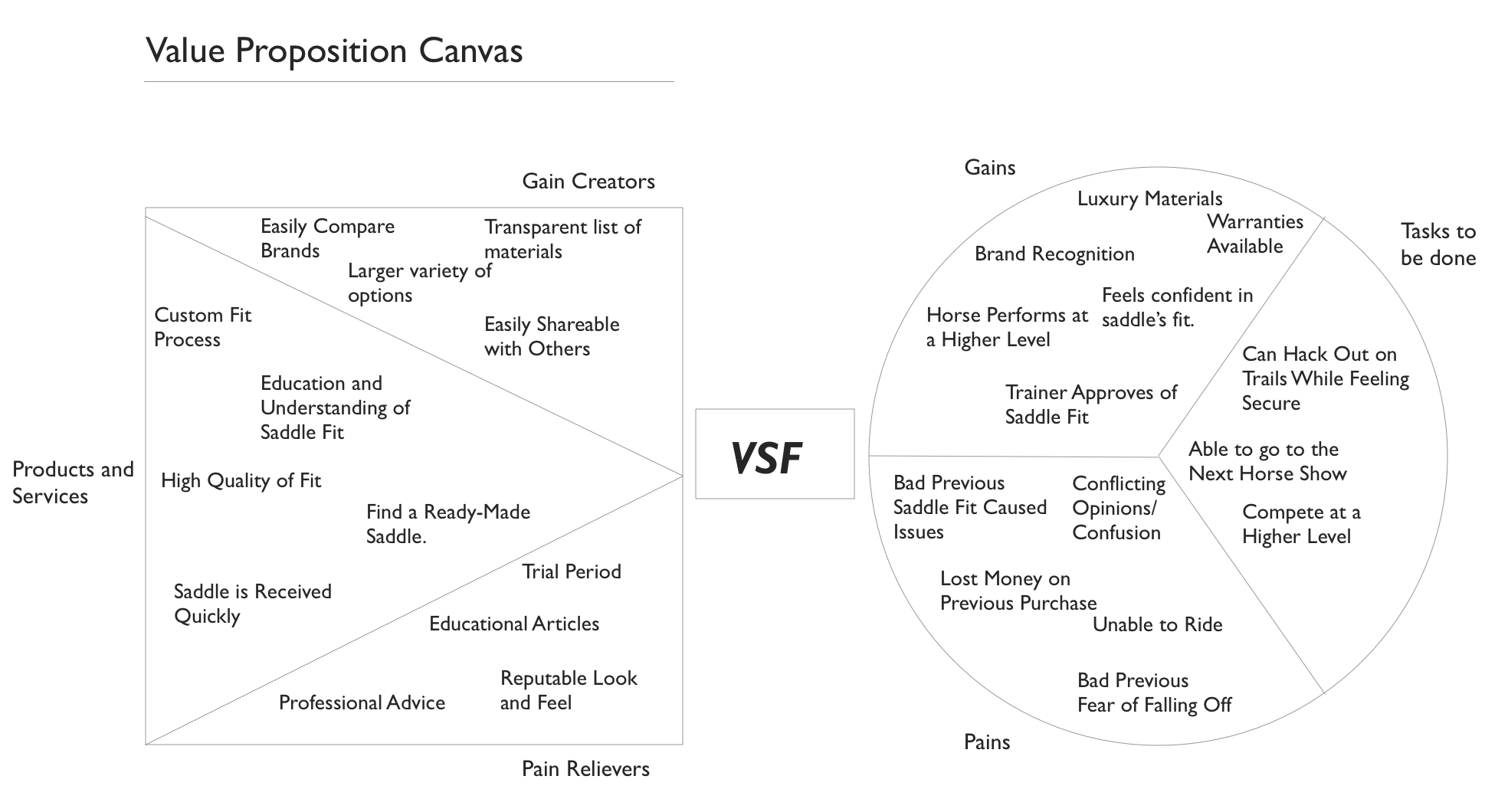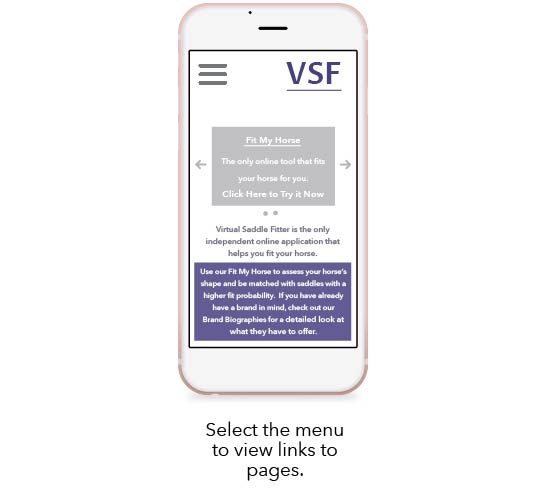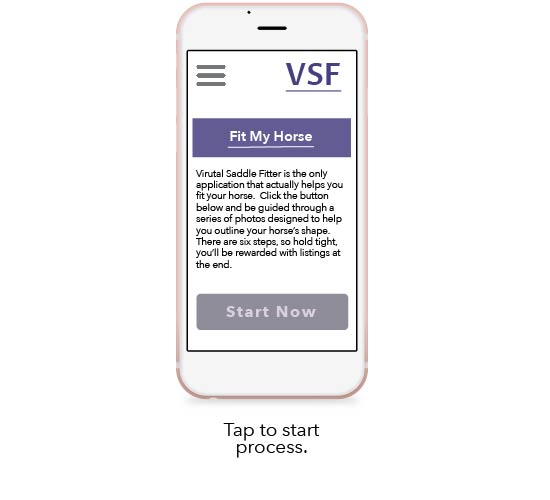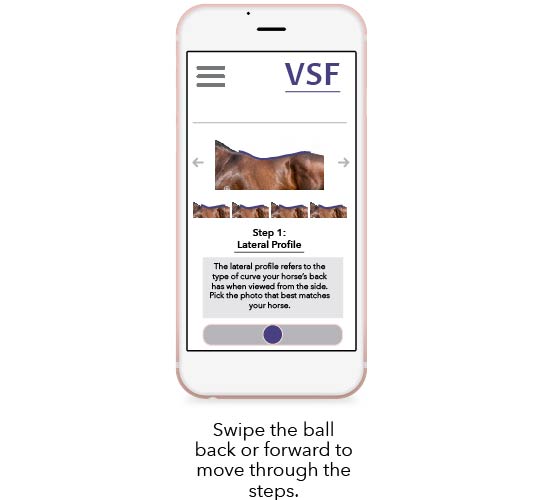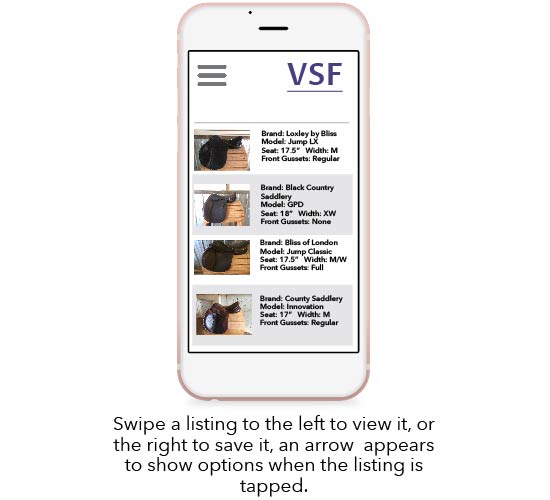
VSF
Virtual Saddle Fitter - Customizing the Saddle Fit Process
Duration:
6 weeks.
Client and Role:
ECUAD Student Assignment, Individual Project.
Sectors:
Equestrian, Education, Business Development.
Overview:
Virtual Saddle Fitter is a project that takes on the complex process of saddle fitting, and breaks it down into a digestible format. This project will guide equestrians through the process of saddle fit in a way that allows them to customize their own results, and understand the needs of their horse.
The Challenge:
The equine world tends to lag behind other industries when it comes to technology. Currently, the only means to search for a saddle online is a craigslist-like approach, where the user needs to know exactly what brand and model they are looking for, or scroll through an endless number of general searches. When looking for advice, the only consistent source online are forums from other novices, sharing their experiences or second hand information.
The inspiration for this project has come out of ten years of seeing the same problem over and over again. There are many myths in the equestrian world surrounding saddle fit, and many equestrians are frustrated by conflicting information and lack of reliable advice.
The Solution:
To rectify this, I intend to make a web application that would be able to let users customize their search criteria specifically to their horse’s needs, without any knowledge of saddle fit. This platform would feature a search function that would use visual components, as the main means of gathering information. It would essentially allow users to match different aspects of their horse’s body shape with images, therefore describing their horse in a way the application can understand. The results given would be based on this input.
In addition to this main element, information and articles surrounding a variety of fitting concepts would be an educational feature of the site. In addition, an unbiased assessment and break down of different brands, would allow users to easily compare companies all in one place.
The Horse Before the Cart
Horses are incredibly resilient. Their ability to persevere through pain, anxiety and bad treatment will never fail to put me in awe. Unfortunately a great deal of this is done unintentionally and subtly, making it much more difficult to correct than what we traditionally think of as abuse.
One of the most common forms of this, is saddle fit. Saddle fitting is a complex process, that requires a great deal of training and natural ability. Unfortunately, the majority of people who are providing the saddles, are sales representatives with little to no training. This structure is so prevalent, because it is the most financially beneficial for the manufacturer.
The other reason this is so common, is that the one who suffers because of this is the horse. Now, if you buy any other equipment, ski boots for example, if they hurt your feet every time you ski, you will most likely look for another option. In the case of saddles, the horse has no such luxury, and many behaviours in the horse caused by ill fit, are often attributed to training or him being ‘willful’.
This is why I wanted to find a way to simplify this process for the common equestrian, giving them access to professional information and allowing them to do right by their horse without requiring an extensive education.
Talking to Riders
In order to explore how to best to help riders with this process, I began by interviewing local equestrians. I wanted to see how they felt about finding and fitting a saddle, and what type of assistance would be most the useful.
I interviewed many riders about their experiences when looking for saddles, a common theme was a high level of frustration at varying points throughout the journey. The majority of riders wanted to browse saddle options on their phone first, often looking when they are at the barn, but they would review points of interest later on their computer. Most riders said their top priority was fit, but price was a very close second. Many riders would first search for saddles online by brand, usually after a recommendation from a friend or someone they trust. Many participants would prefer to buy a saddle that was pre-existing as opposed to ordering, however having to drive saddles around to try is a large frustration, that came up many times in interviews.
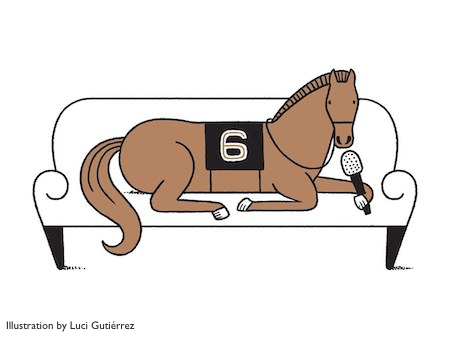
When asked what method would be best in terms of explaining saddle fit, almost every participant preferred a visual approach, saying that this was the easiest way for them to learn. So I then created some sample visuals, and asked if riders if they felt confident finding the indicated area on their horse. I also wanted to ascertain if they could see the difference in angle, when referring to the same area.
All the riders I spoke to, were able to identify the location indicated on their horse. They were also able to see that each photo displayed a different angle in the same area. Moving forward, I will create more in depth visuals to continue to assess if this is a plausible method of collecting saddle fit information.
Getting Personal
Moving forward, I wanted to clarify my vision of my potential user, and the experience they may have. To do this, I created a persona, as well as journey map. My persona’s identity is a woman named Cara, she is in her early thirties and is a health professional. She is able to get back into riding, now that she makes a good living, but she has had a bad experience with saddle fit, previously purchasing a saddle that caused damage to her horse’s back. Her horse needed a great deal of therapy work to recover, and she is now very cautious about her next saddle purchase.
The journey map outlines the highs and lows of her experience. From the frustration of a less trustworthy professional, to the final success of finding a saddle, this outline identifies several points where an online resource could resolve the issues that she comes across.
Mapping the Value
I used a value proposition canvas to outline clearly what the pains, tasks and gains riders have around purchasing and searching for a saddle. This allowed me to outline the products and services of the idea, and how they would provide the benefits and alleviate the struggles equestrians experience.
A Visual Aspect
After creating an initial map of wireframes, and seeing how the potential pages could work together. I wanted to see how this highly visual idea could look on a phone screen. This was a priority, since many of my users described that this would be their first method of contact. So I created some mock ups, more focused on the visual placement of components, and a jumping off point to improve the visual design in the future.
Next Steps
Create Visuals
I have created some very basic visuals at this point, just to see if they were understandable. Moving forward, I will make higher fidelity visuals that better communicate how the process will work, and test its feasibility.
Interview Other Professionals
Having worked in this industry for some time, the issues I have described have come up many times on a day to day basis. However, that doesn’t mean the problems are exactly the same in other areas, or faced the same way. I plan to create a new set of interview points, specifically for other professionals, to better understand their experience with their clients, and how they have approached these issues.
Test a Prototype
I have focused heavily on doing interviews at this point in my research. One of my next steps is to take what I have gleaned so far, and create a prototype to put in front of potential users. This insight will help to inform the structure of the process.
Reflections:
Never Assume
Having been a rider for the last seventeen years, I have the benefit of relating to my users. However, it is dangerous for me to assume that their experience will be similar to my own, finding some similarities does not mean that others should be considered a given.
One Thing At a Time
This project has so many potential facets. I have had to remind myself to break it down, and look at only one process at a time, otherwise it can be easy to feel overwhelmed. It has also taught me the benefit of scheduling one’s tasks very specifically, in order to accomplish larger goals.
Look At The Big Picture
Since I have been in this industry for over ten years, I have gained quite a bit of insight. However, the disadvantage is that it might be too easy for me to rely on just my experience. The way these issues are handled may be different in other places, which is why I plan to interview professionals in other areas.
